From Zanjas to Mains: The Evolution of Los Angeles' Water System
.jpg) |
|
| (1890)* – View looking northwest showing an unpaved Figueroa Street. Note the water-filled ditch (Zanja) on the west side of Figueroa with walkway crossings in front of each of the large homes. A two-story Victorian-style house is visible to the left, followed further to the right by a one-story clapboard-sided home with a porch, to the left of which a windmill is situated. |
Historical Notes From its founding in 1781 through the early 20th century, Los Angeles relied on a network of open water channels, or zanjas, to distribute water for both domestic and agricultural use. These ditches operated under Spanish, Mexican, and later U.S. governance, providing a flexible and locally managed water system. In 1864, the city introduced pressurized water mains, but zanjas remained in use for another 40 years, offering users greater control over sourcing and distribution. While the mains provided reliable, pressurized water delivery, the zanjas allowed for more adaptable use. |
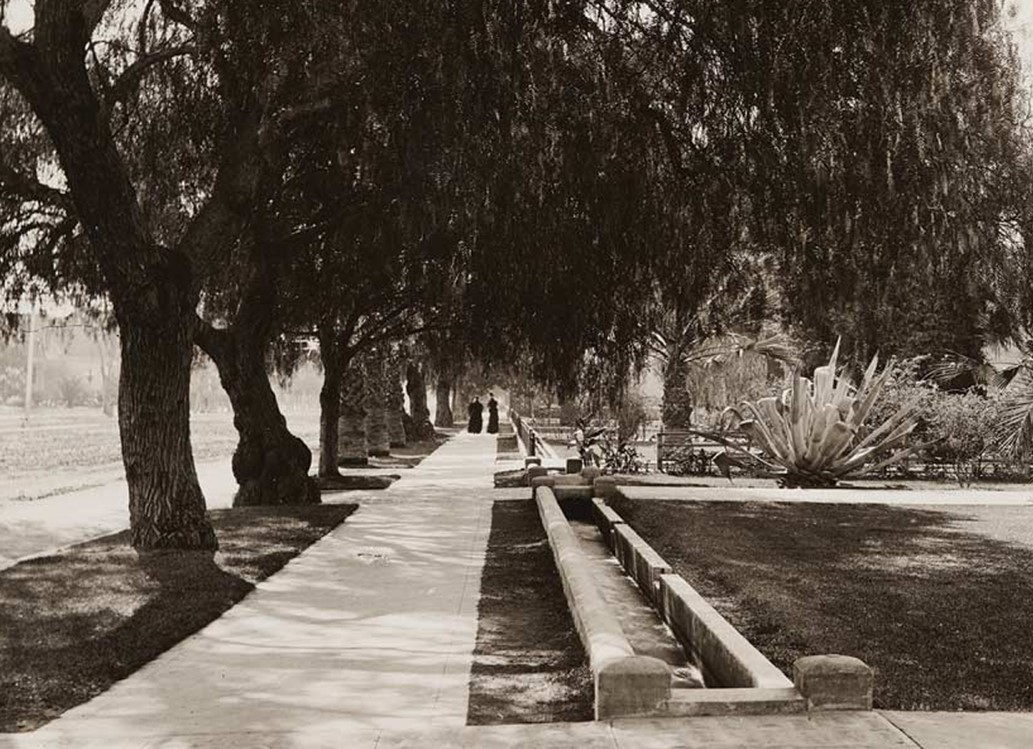 |
|
| (1890)* – Looking south on Figueroa Street, showing Zanja 8-R running between the sidewalk and the residential property line. Photo by C. C. Pierce. |
Historical Notes The development of Los Angeles' water infrastructure was shaped by lawsuits, regulations, and system modifications. Throughout the 1880s, the zanja network expanded to serve new areas as urbanization pushed agriculture southward. The city's first major population boom, fueled by the arrival of the Santa Fe Railroad in the mid-1880s, further transformed water needs. The Zanjero, a public official, oversaw water distribution and resolved conflicts over irrigation, laundry, and sanitation. Over time, urbanization led to covering zanjas for convenience, drainage, and water quality concerns. Some were even converted into storm drains. |
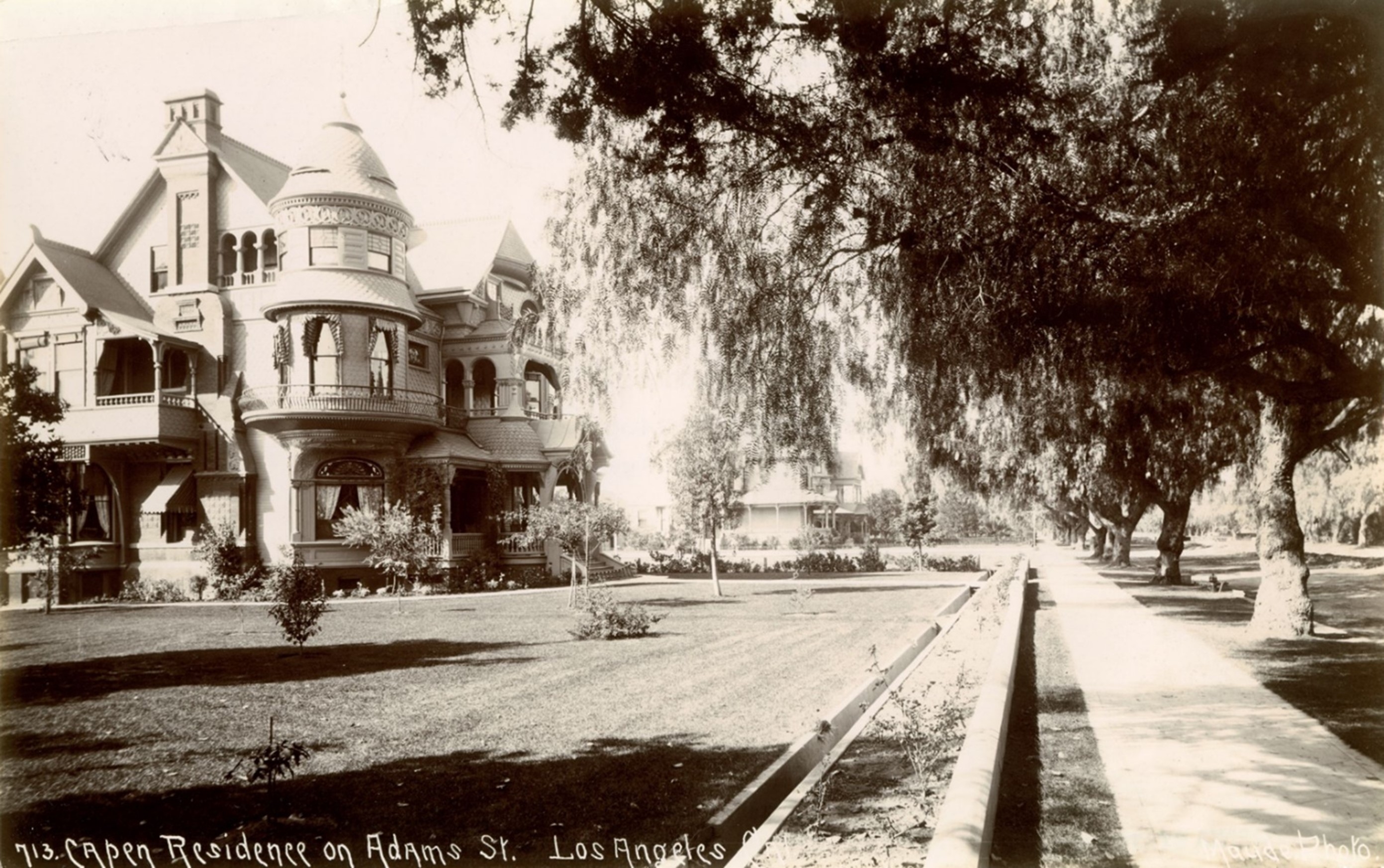 |
|
| (ca. 1900)* – View of the Charles H. Capen residence at 818 West Adams Street, a three-story Queen Anne-style house on a spacious lot, surrounded by young trees, shrubs, and pepper trees lining the sidewalk. A cement-lined ditch at the lawn's edge, known as the Zanja (Spanish for 'ditch'), served as the original water supply for the city's southwest. Built in 1868 and reconstructed in concrete in 1885, it was part of a network of 10 zanjas that, by the 1880s, extended 93 miles. Photo from the Ernest Marquez Collection. |
Historical Notes By the late 19th century, pollution from the booming oil industry became a significant issue, contaminating irrigation water and damaging crops and property. In response to public complaints, the city imposed regulations, restricted drilling near Westlake (now MacArthur) Park, and altered drainage routes. However, as the oil industry expanded, lawmakers often dismissed pollution concerns as unavoidable. Meanwhile, manufactured gas production introduced even more severe water contamination, with industrial waste draining into the zanjas. Legal battles followed, but courts often sided with industry, treating environmental damage as a necessary consequence of economic progress. |
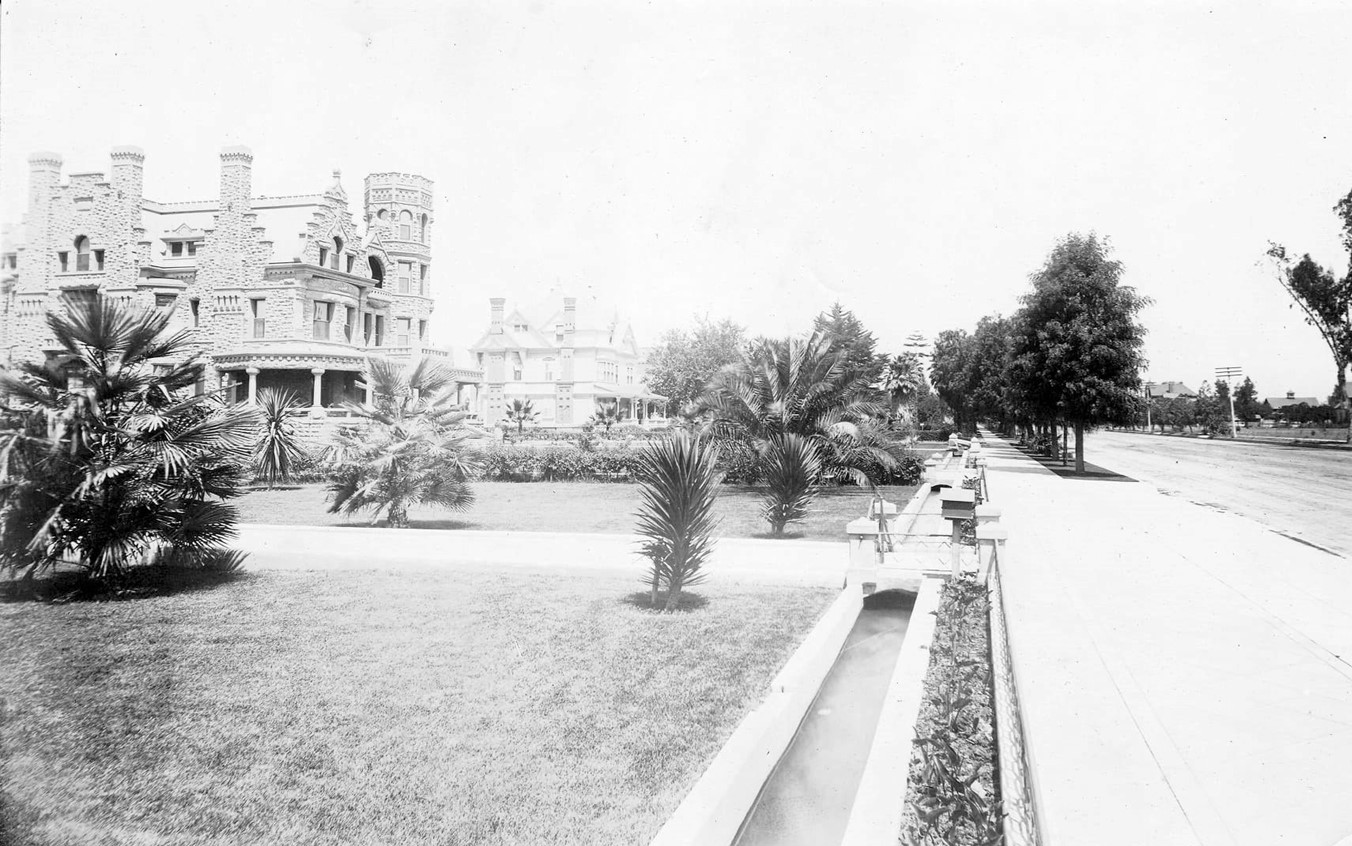 |
|
| (1890s)* – View looking north showing the Stimson House at 2421 South Figueroa Street, with a water ditch (zanja) running parallel to Figueroa along the property line. |
Historical Notes Zanjas were multipurpose, sometimes carrying both water and waste. As sanitary sewers developed, they became more independent of zanjas, though some zanja water was still used for flushing sewage lines. Despite growing concerns over contamination, many Angelenos continued to rely on zanjas for domestic and industrial use, choosing water sources based on cost, availability, and perceived quality. As public health theories shifted from miasma concerns to germ theory, officials placed greater emphasis on clean water and filtration. |
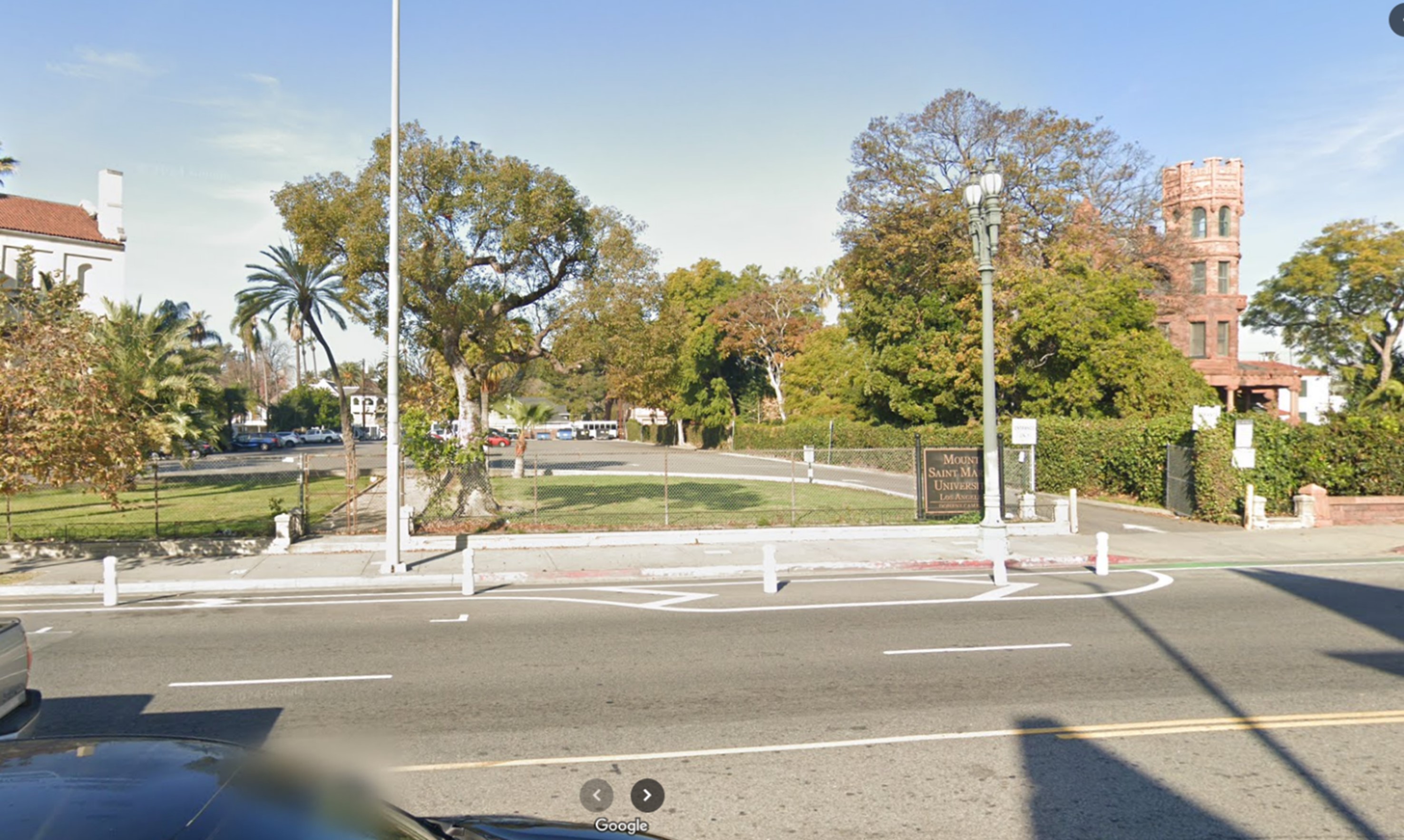 |
|
| (2024)* – Google Street View showing the walkway crossing over remnants of the zanja in front of the gate to Mt. St. Mary’s University on Figueroa, just south of the Stimson House. |
Historical Notes William Mulholland’s 1903 Water Supply Report marked the beginning of the end for Los Angeles’ zanjas, declaring them economically unsustainable due to high maintenance costs, excessive water loss, and mounting legal liabilities from contamination lawsuits. The open-air canals, which had served the city for over a century, lost favor as Mulholland prioritized a more efficient, centralized water distribution system. His 1904 Reallocation Order further sealed their fate by diverting nearly all Los Angeles River flows into underground mains, reducing irrigation deliveries by 95%. |
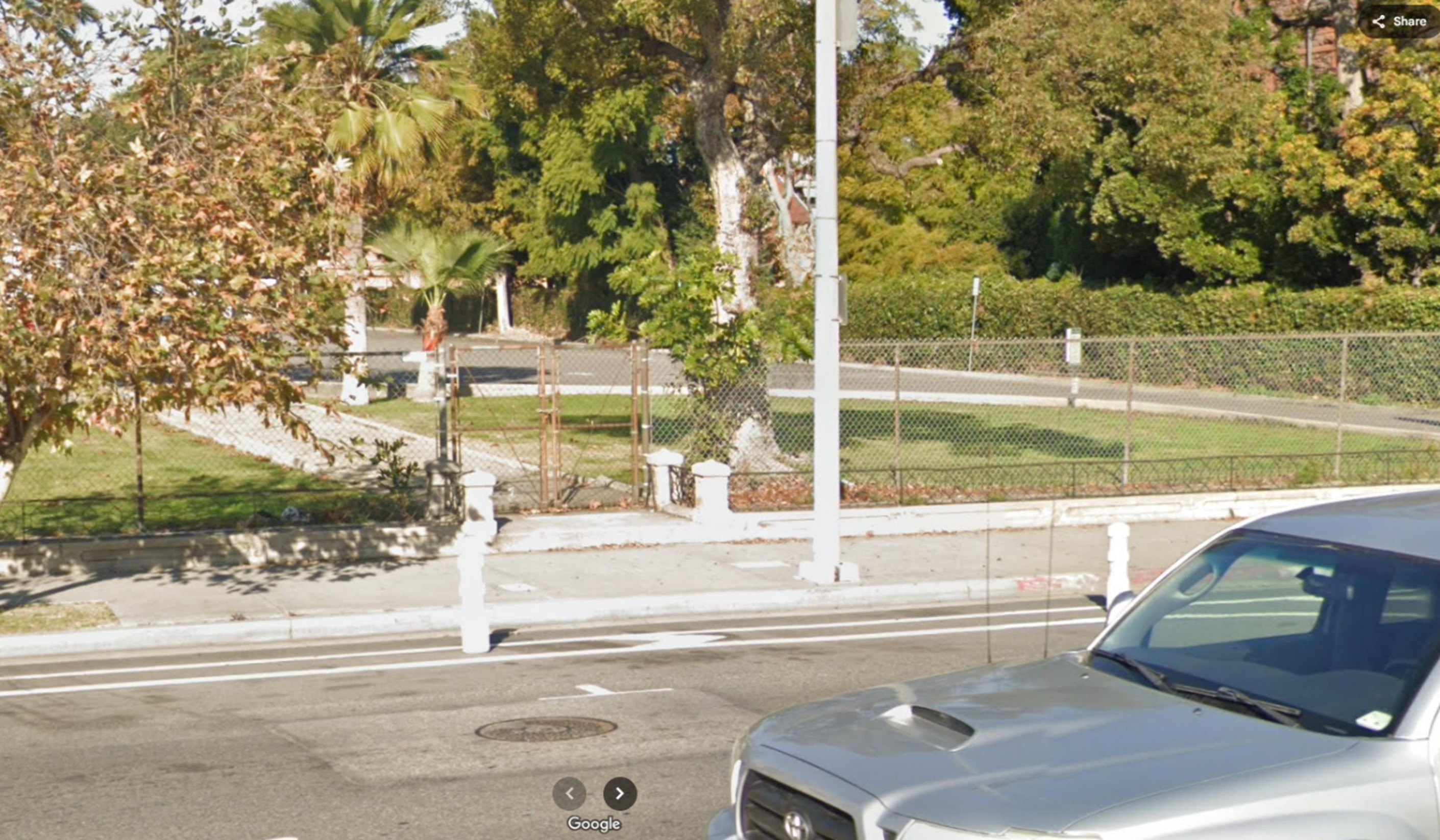 |
|
| (2024)* – Closer view of the walkway crossing over remnants of the zanja in front of the gate to Mt. St. Mary’s University on Figueroa, just south of the Stimson House. |
Historical Notes In 1904, William Mulholland shut down the zanjas to consolidate the water supply into the pressurized mains, reducing local control and adaptability. By 1907, Los Angeles had fully phased out zanja water, marking a shift from a decentralized system to a centralized, commodified one. While modern histories often highlight large-scale projects like the Los Angeles Aqueduct (1913), this earlier period reveals a complex, user-driven water system that played a crucial role in shaping the city's development. |
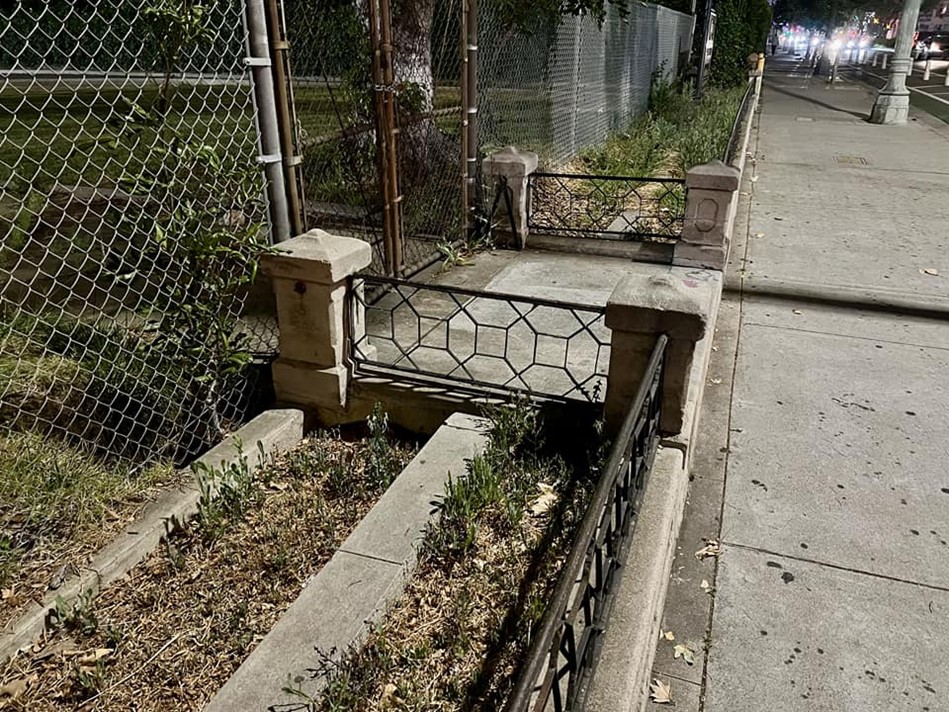 |
|
| (2024)* – Close-up sidewalk view of the walkway crossing over remnants of the zanja in front of the gate to Mt. St. Mary’s University on Figueroa, just south of the Stimson House. Photo courtesy of Gary Helsinger. |
Historical Notes William Mulholland’s 1903 Water Supply Report sealed the zanjas’ fate by declaring them “economically unsustainable” due to several key factors: annual maintenance costs of $18,000 compared to only $12,000 in revenue, a 43% water loss compared to just 9% for the mains, and legal liability from 22 pending contamination lawsuits. Mulholland’s 1904 Reallocation Order diverted Los Angeles River flows entirely into the mains, reducing irrigation deliveries by 95%. The last sale of zanja water occurred on May 15, 1904—a symbolic moment, as it was also the year Mulholland began surveying routes for the Los Angeles Aqueduct. |
* * * * * |
|
Other Sections of Interest |
|
Water and Power in Early LA |
|
Newest Additions |
New Search Index |

A new SEARCH INDEX has been added to help navigate through the thousands of topics and images found in our collection. Try it out for a test run.
Click HERE for Search Index |
* * * * * |
< Back
Menu
- Home
- Mission
- Museum
- Major Efforts
- Recent Newsletters
- Historical Op Ed Pieces
- Board Officers and Directors
- Mulholland/McCarthy Service Awards
- Positions on Owens Valley and the City of Los Angeles Issues
- Legislative Positions on
Water Issues
- Legislative Positions on
Energy Issues
- Membership
- Contact Us
- Search Index
© Copyright Water and Power Associates
Layout by Rocket Website Templates